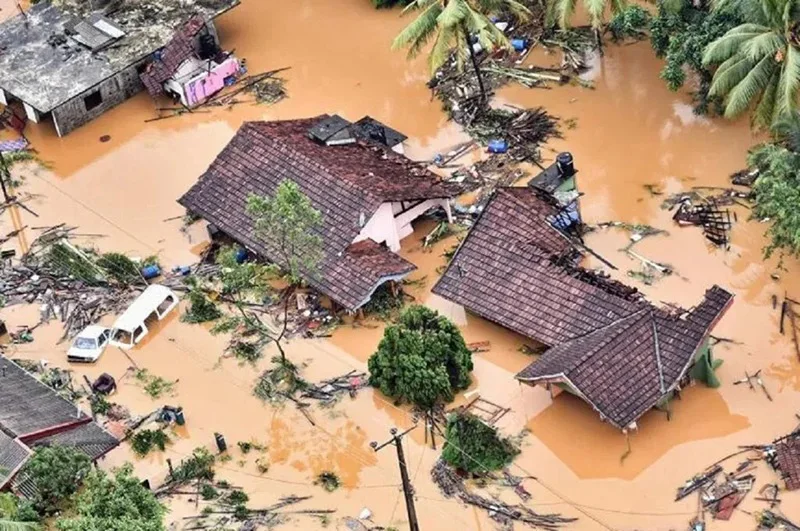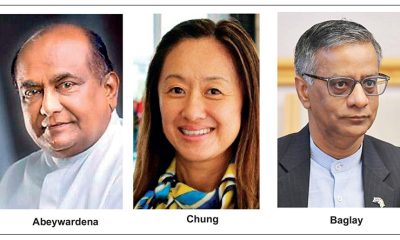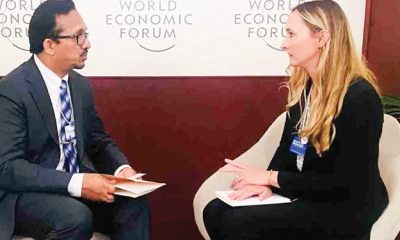Opinion
WHO taken hostage by global corporate network

by Dr Wasantha Bandara,
The Secretary,
Patriotic National Movement
According to the reports of various independent research institutes in the world, the World Health Organization (WHO) is currently contemplating bringing the entire decision-making authority of the global health system under its control. It is also reported that WHO is planning to use two main devices for that purpose: the revision of the International Health Regulation system (IHR), and the signing of a new global epidemic convention to bind all countries of the world to the organisation’s strategic plan and the guidelines based on it.
This process is called “One Health Agenda” and that will give power to make decisions in respect of all areas affecting public health under the authority of the World Health Organization. Accordingly, the World Health Organization will have the power to influence decision making at the global level in relation to many fields such as food, agricultural production patterns, animal production process, environmental protection, population variables, etc. This situation is very serious due to the fact that the big companies that provide funding to the World Health Organization have been given decision-making power over the process and fields of deploying those funds. For example, if funds are provided for a specific project, the organisation does not have the power or ability to deploy the funds according to the priority, no matter how critical the priorities are. As such it cannot be hidden that the World Health Organization currently determines technical decisions and set priorities according to the wishes of funders.
As such, many researchers have revealed that WHO is almost completely dependent on private funds for all its budgetary requirements. According to Dr. David Bell’s research reports, the biggest funder of that organisation is Bill Gates and the umbrella organisations dominated by him. Dr. David Bell accuses Bill Gates of using his funds as leverage to shut down the entire world and introduce mandatory vaccination programmes during the Covid-19 pandemic. It is no secret that a large vaccine market was created and the accounts of large companies were fattened. It has now been revealed that the Bill Gates and Melinda Gates Foundation invested large amounts of money for it even before the pandemic. However, even though the orders are given by WHO for epidemic control, the programmes in every country of the world should be launched with the funds of the taxpayers of those countries.
Accordingly, WHO is accused of having destroyed 200,000 small businesses in the world while 40 new billionaires were created by the end of the Covid epidemic. The whole process has been dubbed by various researchers as “epidemic industry”. Therefore, in the future, it is possible to present an “epidemic package” with measures such as new epidemics control measures and mass vaccination programmes, as well as imposing restrictions on economic and social activities and shutting down the entire world in the end. The cost will be borne by the taxpayers of the respective countries and the profits will be credited to the accounts of Global Corporate network.
Accordingly, the billionaires can ensure that the process is carried out the way they want through the International Health Regulations and the New Pandemic Convention, which gives WHO “global police powers” as mentioned above. New regulations revealed to be currently being drafted will introduce new criteria for declaring a global pandemic and health emergency. Consequently, by creating an epidemic or emergency situation that can happen or is likely to happen, it is possible to recommend actions to be taken in a real situation. For example, it is possible to completely shut down a country and create a global mass market by implementing mass vaccination programmes or preparing for other medical interventions.
According to the new international health regulations, the directives given by WHO are mandatory and all the countries that were parties in 2005 are obliged to implement those directives. Also, the new regulations empower the Director-General of the World Health Organization as an individual to independently declare a health emergency or a global pandemic. As such, the possibility of the independent expert committees to challenge the objectives of the funders is minimal. A mechanism will also be set up to ensure that the relevant orders are strictly implemented by establishing a very comprehensive centralised enforcement process. Accordingly, member countries are constrained in their ability to seek other options other than submitting to the directives of the Director General of the World Health Organization. As an extension of that, the Director General will be empowered to publish any country’s data without that country’s permission, as well as to provide it to the requesting party to be used for any purpose.
Above all, the Director General will have the power not only to deploy the resources of member countries but also to make decisions on intellectual property rights and will also have the power to censor the disclosure of information. Also, it is considered a very autocratic situation to make individual people bound by regulations. Accordingly, the public will have to be obliged as individuals to submit to the closure of borders, the imposition of travel restrictions, to follow the quarantine process, to submit to medical research, to submit to mandatory medical treatment and vaccinations.
In that way, it is very clear that in addition to binding countries and individuals by the new international health regulations, the new Epidemic Convention creates many other obligations. According to the draft currently under discussion, the power of the World Health Organization will spread beyond epidemic control. For example, a global supply chain will be created under the supervision of the World Health Organization for health supplies. In addition, each country must allocate 5% of the national health budget to maintain the emergency situation management structure of the WHO. As an extension of that, each country should create a specific governance structure for the health emergency situation management process under the supervision of the World Health Organization.
This new global pandemic agreement will expand the mandate of the World Health Organization indefinitely under the umbrella of ‘One Health Agenda’. Accordingly, the control of climate change as mentioned above is also considered as a health emergency and the power to impose restrictions and orders related to it has been submitted to the authority of the World Health Organization or in other Words the authority of the funders. In this way, the World Health Organization will have the power to impose orders overriding the local laws of a country. In such a situation, in the name of controlling climate change or in the name of controlling a related health emergency, the Director General of the world health organization will be able to take over the power to control the entire world’s food production system.
WHO is not the only organisation that comes forward to confirm the need for this so-called one health agenda. Not only the United Nations Organization, the European Union, the United Nations Children’s Fund, but also the Global Economic Forum and the Bill and Melinda Gates Foundation have come forward to spend money for that and popularise the concept. Even if this organizations invest in the so-called epidemic industry in this way, the operating costs should be borne by the taxpayers of the respective countries. Hence, Dr. Bell states that the public must invest money for billionaires to make profit and ultimately to become victims of exploitation and destruction. The World Economic Forum has introduced a new theory to provide protection for this evil process. It is known as Public Private Partnership. In order to give it further legitimacy, it is termed as the transformation of the process from the dominance of shareholders to the dominance of stakeholders.
It is very clear that the end result of this private-public or private-government partnership is that the profits of the entire process are accumulated in the accounts of a handful of big companies. To facilitate this process, the World Economic Forum and the United Nations signed an agreement in 2019 and thereby impose the business interests of large companies on sovereign countries through this United Nations and its affiliated international multilateral organisation network. It is in the context that the World Economic Forum gathered in Davos, Switzerland in 2020 presented a new theory called “The Great Reset”. A key device in that theory is contractual private-public cooperation. In other words, the global multilateral institutions system is used to re-establish or reset the world according to the wishes of the global billionaires’ forum or the World Economic Forum. In that process, a Global Decision-Making system will be established.
Eventually, that so-called decision-making system becomes a global governance system or a global government of billionaires. The seriousness of the process is hidden by not naming it the global government but created as a technical decision-making system at global level. But the real situation is the creation of a global government above the independent states of the world. The World Health Organization will become the most powerful tool used to manipulate or control states in the way that the global government desires. Accordingly, the ultimate goal of the new International Health Regulations and the new Global Epidemic Convention should be understood and redefined in this greater context or bigger picture.
It can now be clearly seen that the current moment in which the world is undergoing a great economic depression is being used to pass a critical juncture related to the process of re-establishing the world. It is obviously a kind of imperialist operation. Accordingly, the next World Health Assembly will be used to adopt international health regulations. If that operation becomes a success, the relevant amendments will be put to the vote in May 2024. There, only a simple majority is required to pass those resolutions. But according to the procedure of the conference, the member countries will have a period of 10 months to reject the relevant amendments. As such, in March 2025, the process of creating a new world will begin. If a country has the courage to oppose it, only that state will have a limited space to act according to the international health regulations that have been in force since 2005.
Meanwhile, the World Pandemic Convention will also be put to the vote in May 2024, but will require a special two-thirds majority to pass it. After the adoption of the convention, if endorsed by 30 countries, all signatory countries are bound to implement the convention. But global giants are not waiting until then, and will launch an operation in September 2023 to begin a rehearsal through an operation called the Global Pandemic Response Platform. There is no doubt that it is a rehearsal to guide countries to the 2024 Agenda.
Opinion
Feeling sad and blue?

Here is what you can do!
Comedy and the ability to have a good laugh are what keep us sane. The good news to announce is that there are many British and American comedy shows posted up and available on the internet.
They will bring a few hours of welcome relief from our present doldrums.
Firstly, and in a class of its own, are the many Benny Hill shows. Benny is a British comedian who comes from a circus family, and was brought up in an atmosphere of circus clowning. Each show is carefully polished and rehearsed to get the comedy across and understood successfully. These clips have the most beautiful stage props and settings with suitable, amusing costumes. This is really good comedy for the mature, older viewer.
Benny Hill has produced shows that are “Master-Class” in quality adult entertainment. All his shows are good.
Then comes the “Not the Nine o’clock news” with Rowan Atkinson and his comedy team producing good entertainment suitable for all.
And then comes the “Two Ronnies” – Ronnie Barker and Ronnie Corbett, with their dry sense of humour and wit. Search and you will find other uplifting shows such as Dave Allen, with his monologues and humour.
All these shows have been broadcast in Britain over the last 50 years and are well worth viewing on the Internet.
Similarly, in The USA of America. There are some really great entertainment shows. And never forget Fats Waller in the film “Stormy Weather,” where he was the pianist in the unforgettable, epic, comedy song “Ain’t Misbehavin”. And then there is “Bewitched” with young and glamorous Samantha Stevens and her mother, Endora who can perform magic. It is amazing entertainment! This show, although from the 1970s was a milestone in US light entertainment, along with many more.
And do not overlook Charlie Chaplin and Laurel and Hardy, and all the Disney films. Donald Duck gives us a great wealth of simple comedy.
The US offers you a mountain of comedy and good humour on Youtube. All these shows await you, just by accessing the Internet! The internet channel, ‘You tube’ itself, comes from America! The Americans reach out to you with good, happy things right into your own living room!
Those few people with the ability to understand English have the key to a great- great storehouse of uplifting humour and entertainment. They are rich indeed!
Priyantha Hettige
Opinion
There is much to learn

After the recent disaster, a great deal of information has been circulating on WhatsApp and YouTube regarding our reservoirs, highways, etc.
In many of these discussions, people have analysed what went wrong and how the damage could have been prevented. My question is this: why do all these knowledgeable voices emerge only after disaster strikes? One simple reason may be that our self-proclaimed, all-knowing governing messiahs refuse to listen to anyone outside their circles. It is never too late to learn, but has any government decision-maker read or listened to these suggestions?
When the whole world is offering help to overcome this tragedy, has the government even considered seeking modern forecasting equipment and the essential resources currently not available to our armed forces, police, and disaster-management centres?
B Perera
Opinion
Disasters: Hidden danger

A great deal has been said about Cyclone Ditwah and its impact. To my mind one important aspect of it has not been addressed.
During the 1,400 odd landslides, it washed off a vast volume of soil which entered the various water bodies like tanks, lakes, rivers and streams etc. This process has raised their water levels reducing the water holding capacities (water holding capacity has a different meaning in soil science). What it means is that they cannot hold the same amount of water as before without spilling. Therefore, a precipitation which would not have been significant then can cause spilling of tanks leading to floods now. Hence there is a possibility of experiencing more floods in the future. Due to silting the tanks will carry less water than before, thus reducing the irrigable areas under their command. They will not be able to irrigate the same extents of paddy, thus affecting production.
How do we rectify this situation? It is desilting which can be very expensive.
It is good if these are considered in future planning.
Gamini Peiris
Panadura
Experienced agriculturist
-

 Features7 days ago
Features7 days agoFinally, Mahinda Yapa sets the record straight
-

 Features7 days ago
Features7 days agoHandunnetti and Colonial Shackles of English in Sri Lanka
-

 Business5 days ago
Business5 days agoCabinet approves establishment of two 50 MW wind power stations in Mullikulum, Mannar region
-

 News6 days ago
News6 days agoGota ordered to give court evidence of life threats
-

 Features6 days ago
Features6 days agoCliff and Hank recreate golden era of ‘The Young Ones’
-

 Features6 days ago
Features6 days agoSri Lanka and Global Climate Emergency: Lessons of Cyclone Ditwah
-

 Opinion7 days ago
Opinion7 days agoA national post-cyclone reflection period?
-

 Latest News6 days ago
Latest News6 days agoSri Lanka squad named for ACC Men’s U19 Asia Cup

























